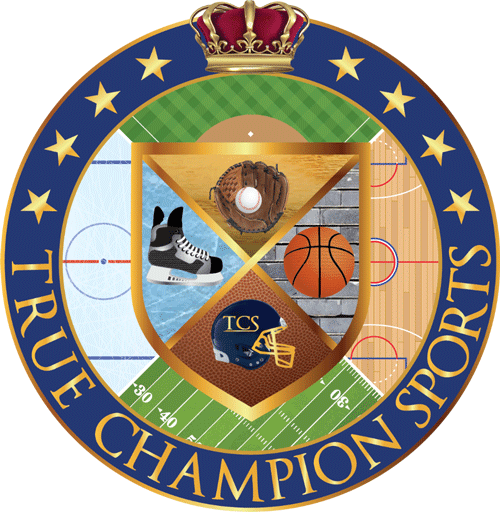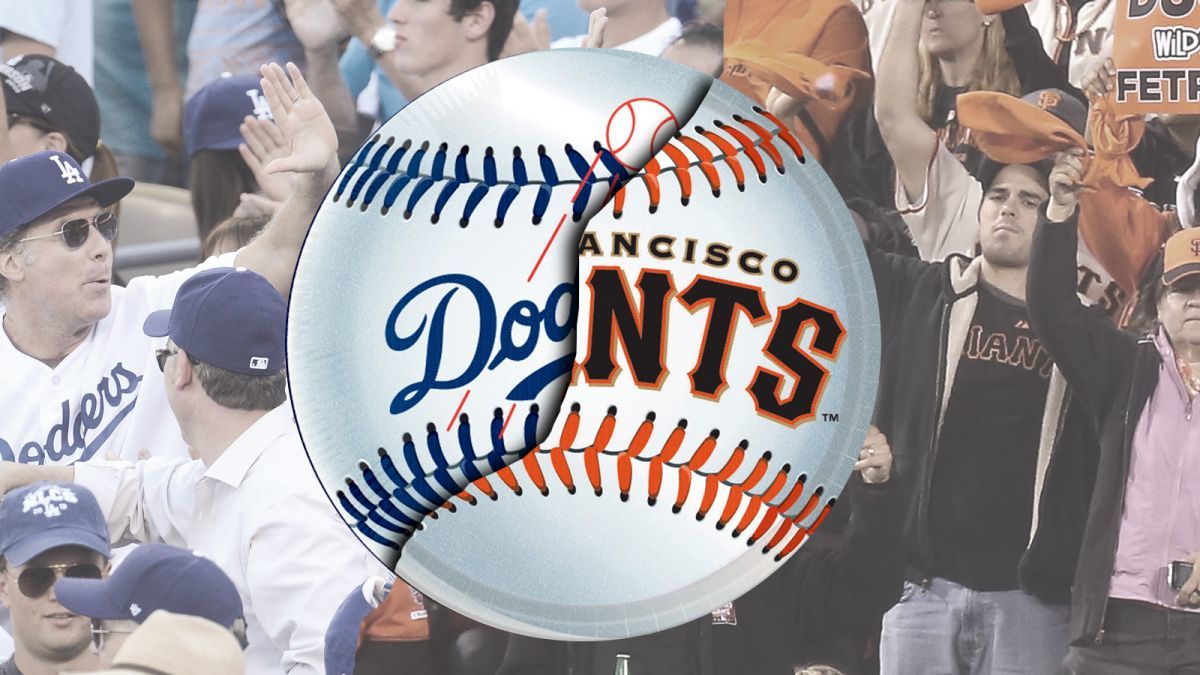Once again in 2016 the Dodgers and Giants have battled for National League West supremacy. As I chipped away at this article over the past few days, the Giants have continued their tail-spin and are now 8 Games back of the Dodgers in the N.L. West; which the Dodgers fittingly clinched last night in Vin Scully’s last broadcast.
The Giants are now in a virtual 3-way-tie for the 2 wild card spots with the Mets and Cardinals. (The Cardinals are 0.5 GB of the Giants, and the Giants are 1 game back of the Mets).
The Giants/ Dodgers rivalry is arguably the greatest in North American sports. Their histories in almost all categories have mirrored each other.
This past week there was yet another chapter of the rivalry written when Madison Bumgarner took exception to a perceived stare-down from Yasiel Puig. The benches cleared, but nothing major came of it. This seemed to rattle the Giants, and the Dodgers came back to win this critical game, and took the series 2 games to 1.
Nickname/ Moniker History
The Giants began play in 1883 as the New York Gothams. After only 3 years using that name, the team’s nickname was changed to the Giants and has remained that way since 1886- which is 131 seasons of Giants baseball.
The Dodgers began play only 1 season later, in 1884 as a Brooklyn based team. Their original nickname was the Brooklyn Atlantics; however their nickname history is much less simple than that of the Giants.
From 1884 to 1931 the team was officially known as the Brooklyn Base Ball Club, and was known by many different nicknames. The branding of sports teams was not nearly as important or as defined as it is in modern times, and for Brooklyn, the team’s nickname evolved organically overtime. In periods of transition for example, half of the team’s fanbase may have been calling the team the “Bridegrooms” while the other half was referring to the team as the “Superbas”.
Although Wikipedia’s listing of the team’s nickname history is not perfect, I would suggest its more than 90% accurate. I’ve added to what Wikipedia has listed with findings through my own research. The following is the history of the Brooklyn Base Ball Club’s nicknames with 90-95% accuracy.
1884: Atlantics
1885-1887: Grays
1888-1890: Bridegrooms
1891-1895: Grooms
1896-1898: Grooms/ Bridegrooms
1899-1910: Superbas
1911-1913: Trolley Dodgers/ Superbas
1914-1918: Trolley Dodgers/ Robins
1919- 1931: Robins/ Dodgers
1932-present: Officially become the ‘Dodgers’
Franchise Location History within New York City
Both the Dodgers and Giants were located in New York City from the mid-1880’s through 1957. Amazingly, both teams relocated to California in the same year, for the 1958 season.
The Dodgers of course landed in southern California; while the Giants claimed northern California and the San Francisco Bay Area as their new home turf. Prior to moving to Los Angeles and San Francisco respectively, these franchises were New York City rivals. Below is a simple yet fascinating account of where these two rivals played in NYC, as well as the same information for the Yankees and Mets.
New York Giants
Played almost exclusively in Upper Manhattan at the Polo Grounds. (This location is very close to the border with the Bronx and Yankee Stadium.)
Brooklyn Dodgers
Played in Brooklyn for the entirety of their New York City history. Primarily at Ebbets Field in the Flatbush area of Brooklyn.
New York Yankees
Arrived in New York in 1903, almost 20 years after the Giants and Dodgers began play. They have played mainly at Yankee Stadium, in the Bronx, for most of their history. In their earliest years, they played in nearby Upper Manhattan at both Hilltop Park and then at the Polo Grounds.
New York Mets- some ‘Amazin’ and mostly forgotten history
Remarkably, the Mets are actually the best example of the connection between the Giants and Dodgers. The Mets were an expansion team of 1962, and were born to replace the 2 National League teams that relocated to California 5 years earlier.
The Mets were paying homage to the National League’s fanbase in New York City when they selected Dodger-blue and Giant-orange as the franchise’s colors- which continue to this day. They also adopted the Giants ‘NY’ cap as their own, but in blue instead of black.
They played their first 2 seasons at the Polo Grounds; the former home of the Giants. After those first two years, they have played exclusively in Queens at Shea Stadium and now at the new Citi Field.
Dodgers Vs. Giants- All-time Success Comparison
The Dodgers and Giants are likely in a virtual tie for being the 3rd/4th most successful franchises in the history of Major League Baseball behind the Yankees and Cardinals.
World Series Championships
San Francisco Giants: 8 Championships. (5 in New York, 3 in California)
Los Angeles Dodgers: 6 Championships. (2 in New York, 4 in California)
Total National League Titles/ World Series Appearances
San Francisco Giants: 20 N.L. Championships. (14 in New York, 6 in California)
Los Angeles Dodgers: 18 N.L. Championships. (9 in New York, 9 in California)
Franchise Performance Quantified by True Champion Sports
Context of the Current Measuring Period (1950- Present)
Currently, I have quantified the performance history of these two franchises dating back to 1950. 1950 is what I refer to as the beginning of the “Semi-modern Era” of Major League Baseball History.
Major League Baseball was ravaged by World War 2 in the 1940s. As the league slowly recovered beginning in 1946, major changes were afoot that would modernize the game. Of monumental importance, baseball began to slowly integrate after the debut of Jackie Robinson in 1947, and this expanded interest in Baseball as well as increased the quality of the league. By the early 1950’s the Negro Leagues, which had been of excellent quality, were beginning to fail due to loss of players into Major League Baseball.
In 1947, the new medium of television-at-home skyrocketed, which changed the landscape of not only baseball, but all sports, and society as a whole. Television in the majority of family homes revolutionized the world, and sports was no exception.
In the 1950s baseball started to expand westward, with a few franchises relocating. Neither expansion nor relocation had been seen in over 50 years.
From 1901 to 1960 there were only 16 Major League teams between the 2 Leagues. The effect television had on broadening the scope of interest of sports created a period of rapid growth. During the 1960s Major League Baseball would grow from 16 teams to 24.
Franchise Comparison in the Semi-Modern and Modern Eras (1950- Present)
World Series Titles: Dodgers- 5 Giants- 4
N.L. Pennants/ (W.S. Appearances): Dodgers- 13 Giants- 8
Since 1950, True Champion’s Franchise Performance Algorithm shows that the Dodgers have been a significantly more successful franchise, all seasons and performance categories considered. They are averaging 258 Franchise Points-per-Season, while the Giants are averaging 170 Franchise Points-per-Season.
Since arriving in California in 1958, the Dodgers are averaging 241 Franchise Points-per-Season, while the Giants have accumulated 162 Points-per-Season.
It’s going to be interesting to see how these 2 eternally connected franchises rank versus one another once their entire histories have been quantified; dating back to 1883.
One conclusion seems clear though- These twin franchises are extremely close in all-time performance/ success, and every season is important to watch for the head-to-head comparison. The Giants franchise clearly seems to have had more success from 1900-1950, while the Dodgers are winning the battle in the semi-modern and modern eras.
The Giants have done a ton to close the gap on the Dodgers in terms of all-time ranking since the beginning of the new century. The Dodgers have not been to the World Series since 1988, while the Giants made appearances in 1989 and 2002, and most importantly, have won 3 Championships in the last 6 seasons.
Can one franchise eventually pull away as the clear-cut ‘winner’? How would a World Series Championship by one of these teams in the coming postseason affect their all-time rivalry? These are the questions True Champion Sports aims to answer for the sports community.

